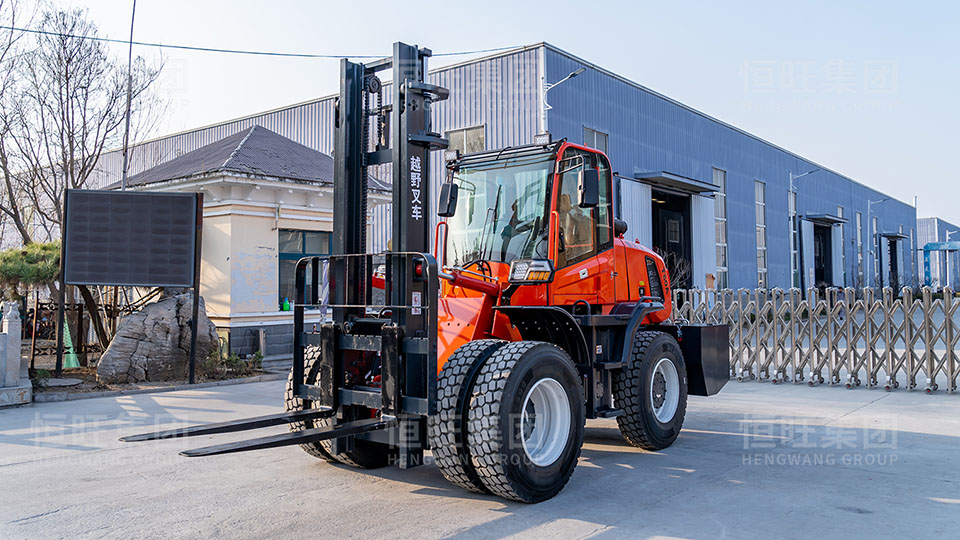The applications of off-road forklifts center on efficient operations in complex terrains. Their all-terrain adaptability and versatility make them key equipment across multiple industries.
1. Construction Sites and Mines
The uses of off-road forklifts are particularly prominent in construction sites, where they can transport building materials like steel and cement, adapting to unpaved surfaces such as muddy or gravelly roads. In mines, their high load-bearing capacity and four-wheel drive system enable efficient loading/unloading of ores and crushed stones, enhancing transportation efficiency.
2. Agriculture and Forestry
Off-road forklifts are used for transporting agricultural materials like fertilizers and straw, as well as loading/unloading logs in forestry. Their wide-tire design ensures passability on muddy fields, while attachments like log grapples are suitable for timber handling.
3. Logistics and Warehousing
The applications of off-road forklifts extend to ports and freight yards, where they adapt to slippery surfaces for container loading/unloading. They also enable flexible stacking in warehouses, optimizing turnover efficiency.
4. Emergency Rescue and Municipal Services
Off-road forklifts are used for post-disaster debris clearance and sandbag transportation. Their four-wheel drive capability and quick modification features (e.g., snowplow installations) make them suitable for all-weather missions.
5. Technical Advantages Supporting Multi-Scenario Applications
The uses of off-road forklifts rely on core designs: all-wheel drive, ground clearance of over 300mm, and non-slip tires, ensuring stability in complex conditions. Modular attachments (such as buckets and boom arms) further expand functionality, achieving "one machine for multiple uses".
In summary, off-road forklifts cover eight major fields including construction, agriculture, and logistics. Their high passability, strong power, and flexible configuration make them core equipment for improving operational efficiency.

